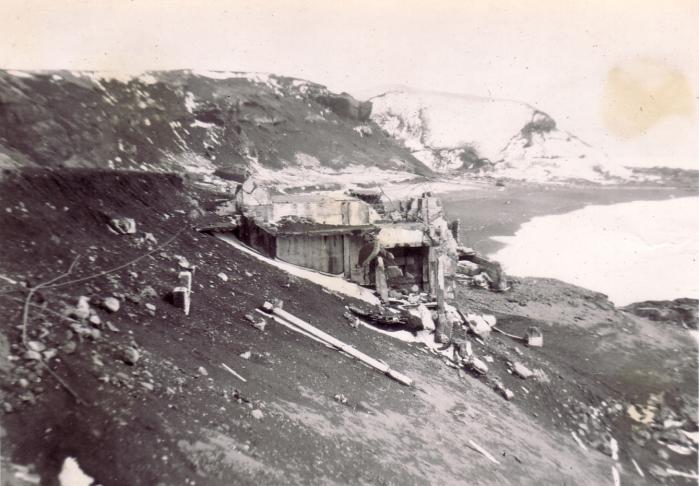Scotch Cap Lighthouse
The station was completed on July 17, but it was nearly a month earlier when it was lighted, on June 18, 1903.

Scotch Cap History
Scotch Cap is at the entrance to Unimak Pass, the most westerly point of the Alaskan mainland, beyond which the Aleutian Islands stretch westward toward Asia. This region is one of the foggiest in the world. Because of the prevalence of fog, the radiobeacon just established, greatly increases the efficiency of the light station, and will assist vessels in passing to the southward of, or through Unimak Pass when the light is obscured. Its great range, one or two hundred miles, provides navigators with the means of taking a bearing a number of hours before even the most powerful light could be seen.
In spring of 1946, five men stationed at the Scotch Cap lighthouse had reasons to be happy. World War II was over. They had survived. Their lonely Coast Guard assignment on Unimak Island would be over in a few months.
But the lighthouse tenders would never return to their homes in the Lower 48. In the early morning of April 1, the earth ruptured deep within the Aleutian Trench 90 miles south. An immense block of ocean floor rose, tipping salt water across the North Pacific.
The earthquake was giant: at least magnitude 8.1. The tsunami that resulted killed 159 people in Hawaii, drowned a swimmer in Santa Cruz, banged up fishing boats in Chile and wrecked a hut on Antarctica. The curve of the Aleutians protected much of Alaska, but the five at Scotch Cap had no chance.
A 130-foot wave struck the lighthouse at 2:18 a.m, leaving nothing but the foundation of the reinforced concrete structure. Though scientists long thought the wave was due to the earthquake rupture, John Miller of the USGS in Denver recently showed a mountain of rocks on the sea floor that appears to be from a massive underwater landslide. That slide might have created the giant wave that hit the lighthouse.

At Scotch Cap after disaster
About Us
Lighthouses are a beacon. Properly used, they’re a beacon of hope to ward off impending danger, yet protecting from and warning of danger is exactly what they’re for.
The earliest lighthouses go back to biblical times, all with a mission to protect mariners. Navigating boats & ships safely means that aids to navigation had to be used to warn of the rocks & shoals, the sudden changes of seascape, and other hazards that prevented safe passage.
The lighthouses of Alaska, which you’ll find in this site, are testament to the challenges of marine navigation, life along the coast of Alaska, and the inherent dangers that can swell up and crush a concrete structure in moments, witness Scotch Gap. Yet for the many lives that have been lost, the lives saved because of these amazing aids to navigation can barely be quantified. We hope you enjoy our site.
Alaska History is Waiting


